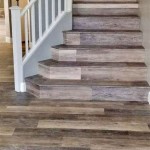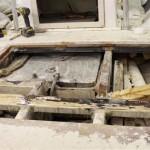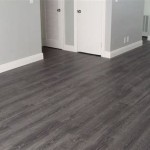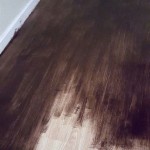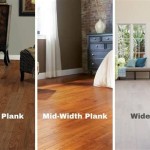Workout Flooring for Home: A Comprehensive Guide
Creating a dedicated workout space within the home offers numerous benefits, including convenience, privacy, and personalized training environments. However, simply designating an area is insufficient. Proper flooring is crucial for protecting the existing structure, enhancing workout performance, and minimizing the risk of injury. Selecting the appropriate workout flooring requires careful consideration of several factors, including the type of activities planned, the available space, budget constraints, and desired aesthetic.
This article provides a comprehensive overview of workout flooring options for home gyms, outlining the various materials, their advantages and disadvantages, and key considerations for making an informed decision. The aim is to equip homeowners with the knowledge necessary to create a safe, functional, and aesthetically pleasing workout environment within their own homes.
Key Considerations Before Choosing Workout Flooring
Before diving into specific flooring types, it's essential to assess the specific needs of the workout space. Failing to do so can result in suboptimal functionality, increased risk of damage to the subfloor, and unnecessary expense.
First, the type of workouts will dictate the required level of impact absorption and durability. A space primarily used for yoga or Pilates will have different requirements than one designed for weightlifting or high-intensity interval training (HIIT). Weightlifting requires flooring that can withstand significant weight drops and prevent damage to both the floor and the equipment. HIIT workouts, on the other hand, necessitate flooring that provides adequate cushioning and grip for dynamic movements.
Second, the existing flooring type and its condition are critical. Installing new flooring over a damaged or uneven subfloor can compromise its performance and longevity. Issues such as cracks, moisture damage, or unevenness should be addressed prior to installation. The presence of carpet requires removal before installing most types of workout flooring due to potential hygiene and instability issues. Concrete subfloors typically offer a stable and durable base, while wooden subfloors may require additional reinforcement or cushioning.
Third, the size and layout of the workout space influence the choice of flooring. For smaller areas, interlocking tiles or mats may be a cost-effective and easily customizable solution. Larger spaces may benefit from rolled rubber or wall-to-wall flooring options. Consider the shape of the room and any obstacles, such as support columns or uneven walls, that might affect installation. Proper measurement is essential to avoid material waste and ensure a seamless fit.
Fourth, budget constraints play a significant role in the selection process. Workout flooring options range widely in price, from affordable foam mats to high-end rubber flooring. It is important to establish a realistic budget and prioritize the features that are most important. Compromises may be necessary, but it's crucial to ensure that the chosen flooring meets the minimum requirements for safety and functionality.
Finally, the desired aesthetic should be considered. While functionality is paramount, the appearance of the workout space can significantly impact motivation and enjoyment. Workout flooring is available in a variety of colors, textures, and patterns, allowing for personalization and integration with the overall home décor. Consider the lighting conditions and existing color scheme when making a selection.
Types of Workout Flooring Materials
The market offers a variety of workout flooring materials, each with unique properties and suitability for different applications. Understanding the characteristics of each material is crucial for making an informed decision.
Rubber Flooring: Rubber flooring is a popular choice for home gyms due to its durability, shock absorption, and slip resistance. It is available in various forms, including rolled rubber, interlocking tiles, and mats. Rolled rubber offers a seamless and continuous surface, ideal for larger areas. Interlocking tiles provide flexibility and ease of installation, allowing for customization and replacement of individual tiles. Rubber mats are portable and can be used for specific exercises or training areas. Rubber flooring is resistant to wear and tear, making it suitable for heavy weightlifting and high-impact activities. It is also relatively easy to clean and maintain.
However, rubber flooring can be expensive, particularly high-quality options. It may also emit a rubbery odor, especially when new, although this typically dissipates over time. Some rubber flooring options may contain recycled materials, which can affect their durability and performance. It is important to choose a reputable manufacturer and ensure that the flooring meets relevant safety standards.
Foam Flooring: Foam flooring, typically made from EVA (ethylene-vinyl acetate) foam, is a cost-effective and lightweight option for home gyms. It is available in interlocking tiles and mats, providing cushioning and shock absorption for floor exercises, yoga, and Pilates. Foam flooring is easy to install and can be quickly assembled and disassembled as needed. It is also relatively soft and comfortable underfoot, making it suitable for prolonged workouts. However, foam flooring is less durable than rubber flooring and is not recommended for heavy weightlifting or high-impact activities. It is also susceptible to tearing and indentation, especially under heavy equipment. Foam flooring is best suited for light to moderate use and may require replacement more frequently than other options.
Carpet Tiles: Carpet tiles offer a comfortable and aesthetically pleasing option for home gyms. They are available in various colors, patterns, and textures, allowing for customization and integration with the overall home décor. Carpet tiles provide sound absorption and insulation, reducing noise levels and maintaining a comfortable temperature. They are also relatively easy to install and can be replaced individually if damaged. However, carpet tiles are not as durable as rubber or foam flooring and are not suitable for heavy weightlifting or high-impact activities. They are also susceptible to staining and moisture damage, requiring regular cleaning and maintenance. Carpet tiles are best suited for low-impact activities such as yoga, Pilates, and stretching.
Vinyl Flooring: Vinyl flooring is a durable and water-resistant option for home gyms. It is available in various forms, including sheet vinyl, luxury vinyl planks (LVP), and vinyl tiles. Vinyl flooring is easy to clean and maintain, making it suitable for areas prone to spills and moisture. It is also relatively affordable and comes in a wide range of styles and colors. However, vinyl flooring is not as shock-absorbent as rubber or foam flooring and is not recommended for heavy weightlifting or high-impact activities. It can also be slippery when wet, requiring the use of non-slip mats or coatings. Vinyl flooring is best suited for light to moderate use and can be a good option for general-purpose workout areas.
Cork Flooring: Cork flooring is a sustainable and eco-friendly option for home gyms. It is made from the bark of cork oak trees, a renewable resource. Cork flooring provides natural cushioning and shock absorption, making it comfortable underfoot. It also has excellent insulation properties, helping to regulate temperature and reduce noise levels. Cork flooring is naturally antimicrobial and resistant to mold and mildew, making it a hygienic option for workout spaces. However, cork flooring is relatively soft and can be susceptible to denting and scratching. It requires sealing to protect it from moisture and stains. Cork flooring is best suited for low to moderate impact activities and can be a good option for yoga, Pilates, and stretching.
Installation and Maintenance of Workout Flooring
Proper installation and maintenance are crucial for ensuring the longevity and performance of workout flooring. The specific installation procedures vary depending on the type of flooring material selected.
Rubber Flooring Installation: Rolled rubber typically requires professional installation to ensure a seamless and secure fit. The subfloor must be clean, level, and dry before installation. The rubber roll is unrolled and adhered to the subfloor using a specialized adhesive. Seams are typically sealed to prevent moisture penetration. Interlocking rubber tiles are easier to install and can be assembled by the homeowner. The tiles interlock together to create a floating floor surface. Rubber mats are the easiest to install and can simply be placed on top of the existing floor.
Foam Flooring Installation: Foam flooring is typically installed using interlocking tiles. The tiles are easy to assemble and disassemble, allowing for quick customization and rearrangement. The subfloor should be clean and level before installation. Foam flooring is generally not adhered to the subfloor, allowing for easy portability.
Carpet Tile Installation: Carpet tiles can be installed using adhesive or double-sided tape. The subfloor must be clean, dry, and level before installation. The tiles are arranged in a desired pattern and adhered to the subfloor. Individual tiles can be easily replaced if damaged.
Vinyl Flooring Installation: Vinyl flooring installation varies depending on the type of vinyl. Sheet vinyl typically requires professional installation to ensure a seamless and watertight surface. Luxury vinyl planks (LVP) and vinyl tiles can be installed using a click-lock system or adhesive. The subfloor must be clean, level, and dry before installation. Proper preparation of the subfloor is crucial for preventing bubbles and unevenness.
Cork Flooring Installation: Cork flooring is typically installed using adhesive. The subfloor must be clean, level, and dry before installation. A vapor barrier may be required to prevent moisture penetration. The cork tiles or planks are adhered to the subfloor using a specialized adhesive. The flooring is then sealed to protect it from moisture and stains.
Maintenance of workout flooring involves regular cleaning and inspection. Rubber flooring can be cleaned with a mild soap and water solution. Avoid using harsh chemicals or abrasive cleaners, as they can damage the surface. Foam flooring can be cleaned with a damp cloth. Avoid excessive moisture, as it can promote the growth of mold and mildew. Carpet tiles should be vacuumed regularly to remove dirt and debris. Stains should be treated promptly to prevent permanent discoloration. Vinyl flooring can be cleaned with a damp mop and a mild detergent. Avoid using abrasive cleaners or scouring pads. Cork flooring should be sealed regularly to protect it from moisture and stains. Spills should be wiped up immediately to prevent staining.
Regular inspection of workout flooring is important for identifying and addressing any potential problems. Check for signs of wear and tear, such as tears, cracks, or dents. Address any damage promptly to prevent further deterioration. Ensure that seams and joints are properly sealed to prevent moisture penetration. Replace damaged tiles or mats as needed to maintain a safe and functional workout environment.
Alternatives For Workout Flooring
Depending on budget and specific workout requirements, several alternatives to the aforementioned common workout flooring materials exist. These alternatives can offer unique advantages and disadvantages depending on the situation.
Plywood: Plywood can offer a cost-effective and durable solution, especially for weightlifting platforms. Multiple layers of plywood can be combined to create a sturdy and stable base that can withstand heavy loads. Plywood can be finished with a sealant or paint to enhance its appearance and protect it from moisture. However, plywood is not as shock-absorbent as rubber or foam flooring, and it can be prone to splintering if not properly finished. It is best suited for weightlifting platforms and can be combined with rubber mats for additional cushioning and impact protection.
Stall Mats: Originally designed for horse stalls, these thick rubber mats provide excellent durability and cushion. They are typically larger and heavier than standard rubber mats, making them suitable for heavy weightlifting and high-impact activities. Stall mats are relatively affordable and can be easily cleaned and maintained. However, they may have a strong rubbery odor, and their size can make them difficult to transport and install. Stall mats are a good option for creating a dedicated weightlifting area within a home gym.
Outdoor Turf: Artificial turf can be used to create a unique and versatile workout space. It provides a soft and cushioned surface for various exercises, including agility drills, sled pushes, and plyometrics. Outdoor turf is durable and weather-resistant, making it suitable for indoor and outdoor use. However, it can be challenging to clean and may trap dirt and debris. Outdoor turf is best suited for dynamic workouts and can add a visually appealing element to a home gym.
Bare Concrete: While not ideal, bare concrete can be used as a workout surface, especially in garages or basements. Concrete is durable and can withstand heavy weightlifting. However, it is hard and unforgiving, increasing the risk of injury. Bare concrete is also cold and can be uncomfortable to work out on. It is recommended to use rubber mats or other cushioning materials to protect the joints and provide a more comfortable workout experience. Bare concrete should be properly sealed to prevent dust and moisture penetration.
Selecting the appropriate workout flooring for a home gym requires careful consideration of several factors, including the type of activities planned, the available space, budget constraints, and desired aesthetic. By evaluating these factors and understanding the characteristics of different flooring materials, homeowners can create a safe, functional, and visually appealing workout environment that supports their fitness goals.

How To Choose Home Gym Flooring Garage

Best Workout Flooring For Home Commercial Exercise Rooms

Best Types Of Flooring For A Home Gym Forbes

Top Flooring Options For Your Home Gym Fci Plano

6 Of The Best Home Gym Flooring Surfaces To Workout On Sprung

Best Home Gym Workout Room Flooring Options Sebring Design Build At

Best Garage Gym Flooring On A Budget

Best Home Gym Workout Room Flooring Options Sebring Design Build Basement

Home Gym Flooring For Your Budget Inc

The Best Flooring For Workout Classes Home Gym
Related Posts


